Colin Montgomerie: a new lease of life
Colin Montgomerie talks to Robin Barwick about his career, senior golf and The Ryder Cup
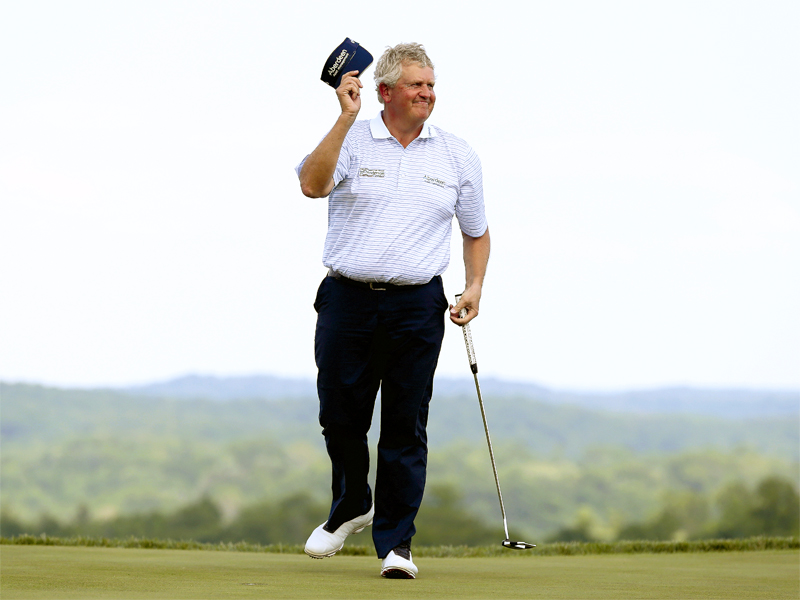
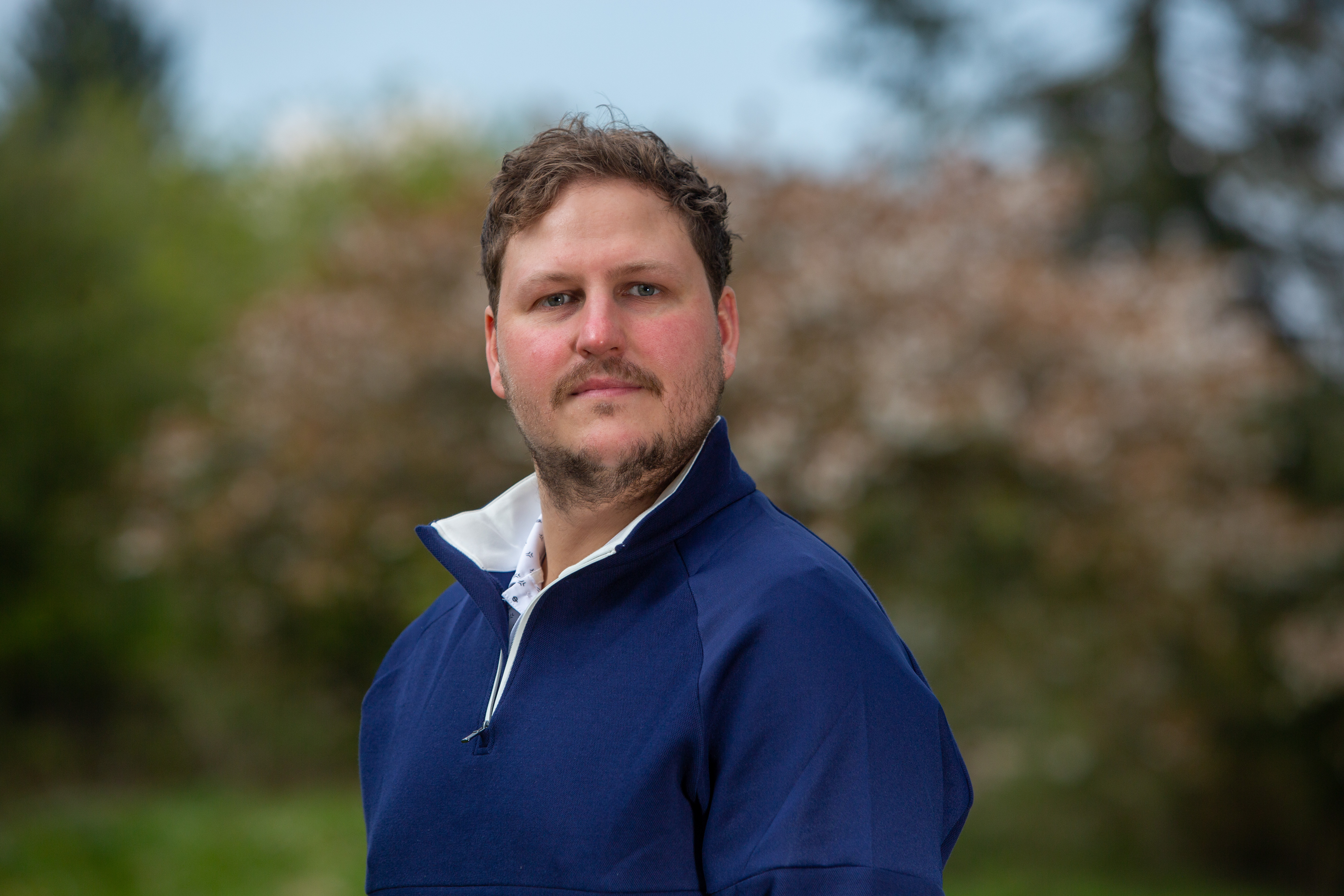
Colin Montgomerie tells Robin Barwick about his motivations for joining the senior ranks, his induction into the World Golf Hall of Fame and why Europe are underdogs for the 2016 Ryder Cup
Words: Robin Barwick
He was not the first to say it and he won’t be the last, but Colin Montgomerie did claim he would not play seniors golf.
‘Monty’ turned 50 on June 23, 2013, and made his seniors debut four days later. He didn’t win at first, but in 2014 Montgomerie finally bagged the first Major title of his career at the Senior PGA Championship (below). No, it is not a fully-fledged, career-defining Major title, like the ones that eluded and haunted Montgomerie during his prime, but still.
Then he got a taste for it and won the US Senior Open, finished runner-up to Bernhard Langer at the Senior Open Championship and finished 2014 second behind his old Ryder Cup team-mate in the Champions Tour’s Schwab Cup ranking.
The story of 2015 has been similar. Montgomerie successfully defended his Senior PGA title, wound up second in the Senior US Open and then third in the Senior Open at Sunningdale in July, having led deep into the final round. He led the Schwab Cup standings up until the final event, the Charles Schwab Cup Championship, but had to make do with second place as Langer pipped him to the post once again.
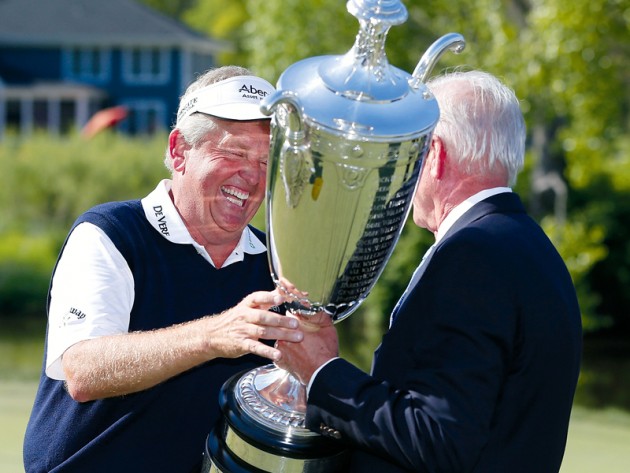
All in all, he’s made a pretty good fist of it. “For a man who said he was never going to play seniors golf, Monty is not doing bad,” Sam Torrance tells Golf Monthly. “I told him before he turned 50: ‘You wait and see, Monty. It’s in your blood.’ Judging by how competitive and how good he has been throughout his career, there was no way he was going to stop when 50 came around. You think, ‘Okay, I will play in a couple of seniors events and see what happens’, and then when you find you are competing it’s bloody awesome. It’s in his blood.”
Get the Golf Monthly Newsletter
Subscribe to the Golf Monthly newsletter to stay up to date with all the latest tour news, equipment news, reviews, head-to-heads and buyer’s guides from our team of experienced experts.
A couple of years ago, as he dusted down his golf bag, Montgomerie admitted something: “I know I said I would never play seniors golf, but I have since learnt that you should never say never.”
“No, I never thought I would play seniors golf,” Montgomerie, now 52, tells Golf Monthly in an exclusive interview, before adding with that distinctive chuckle: “I thought I would be retired by now but I was causing my wife all sorts of headaches so she threw me out to play more golf.”
Closer to the truth (probably) is that Monty’s change of heart was triggered by his induction into the World Golf Hall of Fame in 2013, which conveniently took place just before his 50th birthday. With Hall of Fame induction comes a tour card for the Champions Tour, and the opportunity to play a 24-tournament schedule (including the Senior Open Championship) with total prize money of $49.35 million (in 2015). That is compared to a 2015 European Seniors Tour schedule of ten tournaments (also including the Senior Open) and a total prize fund of approximately $5.6 million.
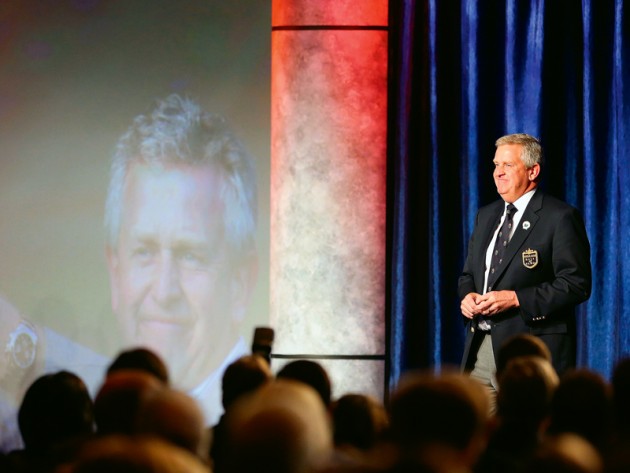
As a carrot the European prize fund is a little shriveled for a golfer, course designer, broadcaster and celebrity of Montgomerie’s success, but in comparison the American fund is a seven-course banquet. Recent business has even taken Montgomerie to Azerbaijan, where he opened Dreamland Golf Club, the first-ever golf course in capital city Baku. The 170-acre Cynthia Dye-designed premium club features native olive trees, lakes, golden sandy bunkers and first-class conditioning, as well as impressive off-course facilities, including a state-of-the-art academy, performance studios and a two-tiered driving range.
But, as Torrance said, the competitive fires in Montgomerie cannot be extinguished by age, and business pursuits can’t deliver the same satisfaction as playing golf at a professional level, regardless of where that takes place.
“I needed a purpose in life,” admits Montgomerie. “My golf course design business is going well, my charity is going well, but I needed more of a purpose to get me up and get me going. It doesn’t matter what you have done or how much bloody money you’ve got.
“To be inducted into the Hall of Fame was a real bonus and it gave me immediate access to the American tour. The Hall of Fame was the catalyst. I received the call from George O’Grady in December [2012], the induction ceremony was in May [2013] and I turned 50 in June. So I thought, what the hell am I doing at home? Let’s give it a go.
“I have enjoyed seniors golf more than I thought I would. The comradeship between the players is much better than I expected. Everyone is happy for everyone else’s success, although everyone remains very competitive. The standard is extremely high and you have to play your best to win.”
Relationship with the fans
Montgomerie also enjoys the fact that the Champions Tour galleries do not taunt him like crowds in the United States did when he was in his prime. Back then, the shouts often featured the words “fat” and “bastard”, or the old favourite first coined in commentary by David Feherty, “Mrs Doubtfire.”
The Sunday of the 1999 Ryder Cup at Brookline saw what was probably the worst crowd treatment of an individual golfer in the history of the game, with wave after wave of insults and obscenities crashing around Montgomerie from an over-excited, widely intoxicated and shamelessly jingoistic home crowd.
Montgomerie handled the verbal onslaught with remarkable calm and determination that day, taking punch after punch for the team without a flinch, and winning his point against Payne Stewart. But in individual tournaments, the combustible Montgomerie would often sulk and occasionally lose his temper when baited, which only served to encourage the perpetrators. It was the same mentality that is rife in school playgrounds the world over.
American magazine Golf Digest even issued 25,000 ‘Be nice to Monty’ badges at the 2002 US Open at Bethpage National Park in New York, in an attempt to quell the notoriously unsympathetic local sports fans. That just led to badge wearers taking the flak too.
“There has been no trouble at all on the Champions Tour,” assures Montgomerie. “It is a whole different atmosphere. They have embraced me and I have embraced them so we are working together and it is absolutely brilliant. Now, to get clapped onto the last green instead of what it was in the late 90s is superb, and it is a credit to all the people out there. Once you are over 50 the whole thing changes, even playing in the US Open and the USPGA Championship, because I am not a threat any more in that world. When I was number two in the world I was a threat. I was the top-ranked European player and there were issues.”
And in the Ryder Cup, Monty was a lethal threat. One of his greatest on-course achievements was never losing a Ryder Cup singles point. In eight Ryder Cups as a player between 1991 and 2006, Montgomerie won six singles points outright and halved the remaining two. Mark Calcavecchia, Lee Janzen, Ben Crenshaw, Scott Hoch (twice), Stewart and David Toms (twice) – some of American golf’s grittiest scrappers among them – could not take a point off Monty.
“In a funny sort of way, the verbal abuse I was getting was a bit of a back-handed compliment, although it didn’t seem like that at the time,” he adds.
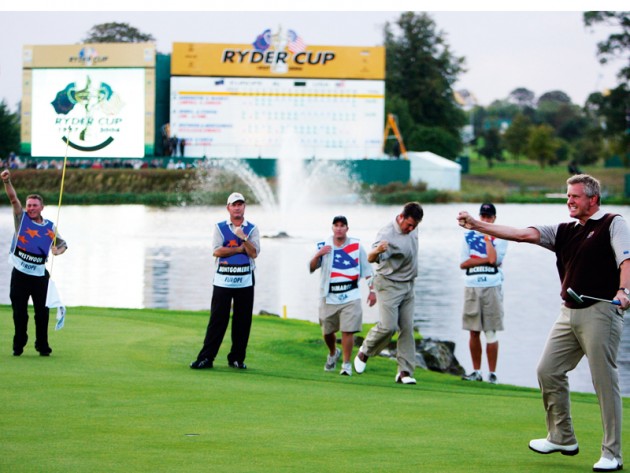
Four in a row?
Looking ahead to the 2016 Ryder Cup, Montgomerie concurs with the claim European skipper Darren Clarke made in ranking the European team as underdogs as the countdown to Hazeltine gathers pace.
“Europe as underdogs? Possibly,” he says. “You might think it is a bit odd to consider Europe as underdogs when we have won six out of the last seven Ryder Cups, but on this occasion, possibly we are. The Americans are on a bit of a run right now and with them playing at home next year Darren is aware that it will be a difficult task, no question.”
The last Ryder Cup in the United States was in 2012, when Ian Poulter sparked an unlikely European revival when Europe looked dead and buried midway through the Saturday afternoon fourballs. You will hardly need reminding that Europe were 10-4 down when Poulter birdied the last five holes of his fourball match, partnering Rory McIlroy against Jason Dufner and Zach Johnson, to snatch a point after the European pair had trailed from the first hole to the 14th.
The hosts led 10-6 going into the singles, McIlroy nearly missed his tee time after over-sleeping, but Jose Maria Olazabal’s team prevailed to complete the biggest comeback by an away team in Ryder Cup history, winning 14 ½-13 ½.
“I think there was a Seve influence coming down from above that week, to be honest,” reflects Montgomerie, “and Olazabal was playing that spiritual game. It was amazing what happened. There was no blame on [American captain] Davis Love, it was just a case of how well Europe played late on Saturday afternoon and all through Sunday. It gives hope to any away team, that it is never over until one team has 14 ½ points.”
After the debacle of Tom Watson’s captaincy of the American team at Gleneagles last year – when the Ryder Cup was played on the doorstep of the Montgomerie family home in the village of Dunning – the PGA of America has given Love a shot at redemption. From the opening ceremony at Medinah to the start of those Sunday morning singles, Love had the walk and the talk of a winning captain.
His captaincy seemed virtually flawless, and was highlighted by the inspired pairing of Phil Mickelson and Keegan Bradley, who were indomitable for three matches until Love made his first mistake, benching them for the Saturday fourballs.
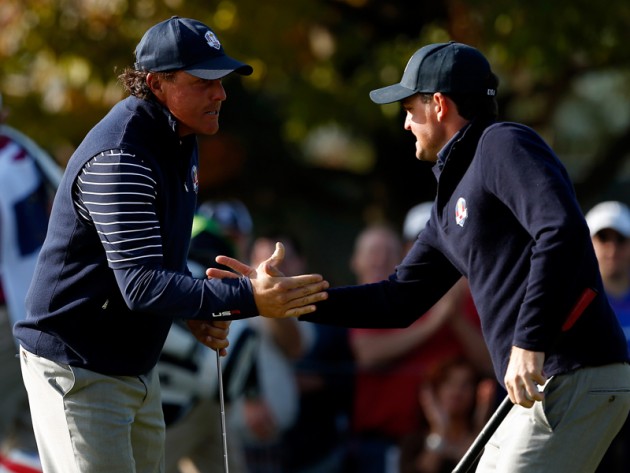
Montgomerie identifies a second error in Love’s judgement, too. “I think the American singles order was okay, but I would always have tended to put Woods higher up the list,” he says, recalling Love’s singles order that placed Woods in the final match against Francesco Molinari. “I always think that Tiger can get a little bit lost further down the order. He is someone who loves the limelight, loves the show, and I would have stuck Woods out at number one to get his point on the board.
“Why save your best penalty taker until the sixth penalty, just in case it goes that far? I would have got Woods’ point in the bag early on, and that is what I would do with McIlroy today, and Stenson and Rose, our stars in Europe, and Kaymer. That is what I did with my team. I put Westwood out first, followed by McIlroy, then Donald to get those points early on. Since Sam Torrance did it back in 2002 that has been the way to do it; put your so-called strength at the top.”
And who did Torrance send out first in 2002? Montgomerie, of course. He thrashed Hoch 5&4, Europe won the Ryder Cup back and Montgomerie’s rank as on-course leader was sealed forever. Until Montgomerie revived his playing career on the Champions Tour, he had failed to win a single PGA Tour title in the United States, let alone a Major, so when he was voted into the World Golf Hall of Fame there were murmurs of dissent.
Some of them louder than murmurs. It is true, Montgomerie should have won the US Open at least once, well, twice, but what he did in eight Ryder Cup singles matches alone – those eight rounds of golf over the course of 16 years – cut his niche among the greats.
Three senior Major titles later, and as the 2015 season concluded on both sides of the Atlantic, Montgomerie narrowly missed the chance to become the first golfer to top the money lists on both senior tours. He’ll have to make do with the European Order of Merit title he secured, thanks largely to his victory in the US Senior PGA Championship in May. He always was one for the Order of Merit, as the Race to Dubai was known during Montgomerie’s era on the European Tour. Montgomerie won it a record eight times, including seven in a row from 1993 to 1999, with the eighth in 2005.
“I would love to complete the American-European Seniors double one day,” says Montgomerie. “I would love to do that.”
Well, there you go. Something else to get him out of bed in the mornings.
All photography: Getty Images

Nick Bonfield joined Golf Monthly in 2012 after graduating from Exeter University and earning an NCTJ-accredited journalism diploma from News Associates in Wimbledon. He is responsible for managing production of the magazine, sub-editing, writing, commissioning and coordinating all features across print and online. Most of his online work is opinion-based and typically centres around the Majors and significant events in the global golfing calendar. Nick has been an avid golf fan since the age of ten and became obsessed with the professional game after watching Mike Weir and Shaun Micheel win The Masters and PGA Championship respectively in 2003. In his time with Golf Monthly, he's interviewed the likes of Rory McIlroy, Justin Rose, Jose Maria Olazabal, Henrik Stenson, Padraig Harrington, Lee Westwood and Billy Horschel and has ghost-written columns for Westwood, Wayne Riley, Matthew Southgate, Chris Wood and Eddie Pepperell. Nick is a 12-handicap golfer and his favourite courses include Old Head, Sunningdale New, Penha Longha, Valderrama and Bearwood Lakes. If you have a feature pitch for Nick, please email nick.bonfield@futurenet.com with 'Pitch' in the subject line. Nick is currently playing: Driver: TaylorMade M1 Fairway wood: TaylorMade RBZ Stage 2 Hybrid: Ping Crossover Irons (4-9): Nike Vapor Speed Wedges: Cleveland CBX Full Face, 56˚, Titleist Vokey SM4, 60˚ Putter: testing in progress! Ball: TaylorMade TP5x
-
 Corales Puntacana Championship Prize Money Payout 2025
Corales Puntacana Championship Prize Money Payout 2025The PGA Tour’s latest opposite field event features an attractive prize money payout and some former champions in the field
By Mike Hall Published
-
 RBC Heritage Prize Money Payout 2025
RBC Heritage Prize Money Payout 2025Scottie Scheffler defends his title at Harbour Town in the latest of the PGA Tour’s signature events
By Mike Hall Published